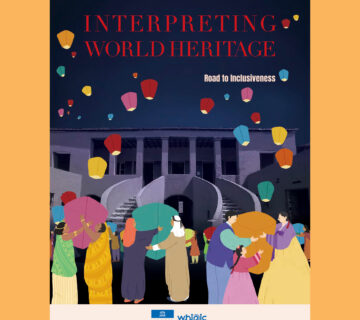Three years after the European Year of Cultural Heritage, another European Year might offer new opportunities for heritage interpretation.
The European Commission’s official proposal for the Year was released on 4 March 2020. It was presented to the European Parliament on 23 June 2020 and was accepted by its Committee on Transport and Tourism (Tran) on 12 October 2020. Within the Commission, DG MOVE (Mobility and Transport) will be responsible for the implementation of the Year. So far, there is only limited information but questions can be addressed to MOVE-C3-EUROPEAN-YEAR-RAIL-2021@ec.europa.eu.
The proposal strongly refers to the European Green Deal suggesting that “through projects, debates, events, exhibitions and initiatives across Europe, the European Year of Rail will promote rail as an attractive and sustainable way to move across Europe, to citizens, business and authorities, emphasising its Union wide and innovative dimension. By reaching out to citizens, beyond the railway sector, through dedicated events and communication campaigns, it will convince more people and businesses to make use of rail”. In an information to the Expert Group on Cultural Heritage from 18 November 2020, DG Education and Culture underlined the relevance of the Year also for the heritage sector, stating: “The final text makes direct reference to rail’s history and its cultural heritage for building on the rail’s power for collective imagination. The European Year of Rail is indeed directly relevant to sustainable cultural tourism and heritage, with the great train routes of Europe, railway and transport museums, and the reuse and conservation of industrial railway heritage.”
There is no doubt that the growth of the railway system had significant impact on the development and connection of European regions, especially from the mid-19th to the mid-20th century. People in villages gained access to towns, travelling between cities became much easier, in some places, railway construction work brought thousands of people from other countries into remote areas (e.g. regarding the construction of Alpine bridges and tunnels). Railway lines turned tiny villages into international hubs – or caused the decline of others that were sidelined or bypassed. In many European countries, parts of the railway system are listed heritage, even including three World Heritage sites:
• Forth Bridge, UK
• Rhaetian Railway in the Albula / Bernina Landscapes, Switzerland
• Semmering Railway, Austria
Many recent and historic railway lines are part of protected landscapes and therefore link culture to nature. In Austria and Switzerland, the landscapes surrounding the tracks (to be viewed from the train) are actually part of the designated World Heritage, and railway companies refer to the World Heritage status of their lines. For example, in Switzerland there is a UNESCO World Heritage pass which travellers can buy, and the German main railway company is cooperating with national parks in Germany, Austria and Switzerland (some of them World Heritage) through the programme: Fahrtziel Natur (‘Destination nature’).
There is also a large number of heritage railways (lines out of regular operation) and of railway museums in Europe (see also here). Most larger railway companies run their own museums or are involved in the operation of public railway museums. In Germany alone, there are more than 175 railway museums or museum lines, and even more activities are supposed to take place in France and – by far the most – in the UK.
So, the Year might offer some potential for IE members. Interpreting European railway heritage helps to approach sustainability from a new direction and might open the field of technical heritage to some members. It could also help to get in touch with stakeholders to whom there is so far no real connection, regarding institutions for technical heritage as well as large and financially strong companies. There are also links to IE’s upcoming tourism initiative since the idea of transition hubs is related to the idea of turning key railway museums into hubs for smaller railway museums.
Considering that the Year has only been confirmed in October 2020, and that so far the EU long-term budget for 2021-2027 has still not been adopted, it can be expected that EU funding will only be provided towards the end of 2021. The proposal of the Commission includes an allocation of 8 million euros for the implementation of the Year which, in European terms, is not too much. However, the proposal explicitly mentions Creative Europe and Erasmus+, and since the budget for these programmes will increase for the seven upcoming years, it could be expected that funding for projects linked to the Year would also be available within them. Furthermore, the Year might be seen as catalyst to encourage associations, foundations and companies related to the railway system to provide funding for interpretive activities, and an option for IE trainers could be to address railway museums as potential organising partners for IE training courses.
So, please get active if you feel the European Year of Rail offers opportunities for you – and share your ideas and experiences through our social media channels or through the newsletter in order to foster exchange.
To cite this article:
IE Management (2020) ‘2021 will be the European Year of Rail’. In Interpret Europe Newsletter 4-2020, 31-32.
Available online: https://www.interpret-europe.net/fileadmin/Documents/publications/Newsletters/IE_newsletter_2020_4_winter.pdf




